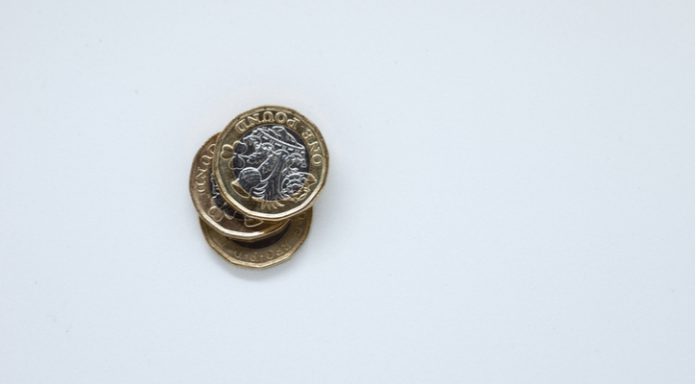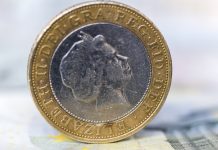The pound rallied against the euro in early trade on Thursday reaching a 2 month high of €1.1302, before falling back towards the flatline by the end of trading.
| What do these figures mean? |
|---|
|
When measuring the value of a pair of currencies, one set equals 1 unit and the other shows the current equivalent. As the market moves, the amount will vary from minute to minute. For example, it could be written: 1 GBP = 1.13990 EUR Here, £1 is equivalent to approximately €1.14. This specifically measures the pound’s worth against the euro. If the euro amount increases in this pairing, it’s positive for the pound. Or, if you were looking at it the other way around: 1 EUR = 0.87271 GBP In this example, €1 is equivalent to approximately £0.87. This measures the euro’s worth versus the British pound. If the sterling number gets larger, it’s good news for the euro. |
The pound received an early boost following retail sales data that beat analysts forecasts. Retail sales increased 3.5% year on year in August, well ahead of the 2.3% that analysts had been predicting. Adding to the positivity, July’s retail sales figure, which was already high at 3.7% was also revised upwards to 4%..
The hot August weather, in addition to a recovery in wages has encouraged consumers to continue spending across the latter part of the summer. This data combined with the stronger than forecast inflation data earlier in the week supports the Bank of England’s recent decision to raise interest rates. The stronger data also supports a more hawkish central bank, encouraging investors to view another interest rate rise as possible sooner rather than later.
| Why do raised interest rates boost a currency’s value? |
|---|
| Interest rates are key to understanding exchange rate movements. Those who have large sums of money to invest want the highest return on their investments. Higher interest rate environments tend to offer higher yields. So, if the interest rate or at least the interest rate expectation of a country is relatively higher compared to another, then it attracts more foreign capital investment. Large corporations and investors need local currency to invest. More local currency used then boosts the demand of that currency, pushing the value higher. |
Brexit concerns were once again responsible for dragging the pound lower later in the session. As European leaders meet for the second day of an informal summit in Salzburg, Austria, Brexit optimism soured.
UK Prime Minister Theresa May looked for support from her peers in Salzburg, instead European Council President Donald Tusk ratcheted up the pressure on May. Tusk laid down an unexpected ultimatum, to find a solution to the Irish border issue within the next four weeks or Brexit talks will break down. Fears of a hard, no deal Brexit pulled the pound off its 2-month high.
| Why is a “soft” Brexit better for sterling than a “hard” Brexit? |
|---|
| A soft Brexit implies anything less than UK’s complete withdrawal from the EU. For example, it could mean the UK retains some form of membership to the European Union single market in exchange for some free movement of people, i.e. immigration. This is considered more positive than a “hard” Brexit, which is a full severance from the EU. The reason “soft” is considered more pound-friendly is because the economic impact would be lower. If there is less negative impact on the economy, foreign investors will continue to invest in the UK. As investment requires local currency, this increased demand for the pound then boosts its value. |
Euro Rallies On Positive ECB outlook
The euro was out of favour in early trading following underwhelming eurozone confidence data. Analyst had been expecting eurozone consumer confidence to have worsened slightly to -2 from July’s -1.9 However, the actual print was significantly lower at -2.9, sending the euro lower, as investors become increasingly concerned over the impact of global trade tensions on consumers.
The euro received a boot later in the afternoon as European Central Bank Chief Economist Peter Praet spoke encouragingly about the eurozone economy, confident that inflation is on the right track.
Today sees the publication of the most important eurozone economic data for the week. Firstly, the French GDP, followed by sector activity data in the form of purchase managers index (PMI’s) for the region. Strong figures could help boost the euro.
This publication is provided for general information purposes only and is not intended to cover every aspect of the topics with which it deals. It is not intended to amount to advice on which you should rely. You must obtain professional or specialist advice before taking, or refraining from, any action on the basis of the content in this publication. The information in this publication does not constitute legal, tax or other professional advice from TransferWise Inc., Currency Live or its affiliates. Prior results do not guarantee a similar outcome. We make no representations, warranties or guarantees, whether express or implied, that the content in the publication is accurate, complete or up to date. Consult our risk warning page for more details.
This article was initially published on TransferWise.com from the same author. The content at Currency Live is the sole opinion of the authors and in no way reflects the views of TransferWise Inc.





